Streets within this zone include:
Albany Road (section of)
Earlsdon Avenue North (section of)
Newcombe Road
Poplar Road
Zone 4 Map

(40) Methodist Church and Library
Zone Four comprises Poplar Road, Earlsdon Avenue North, Newcombe Road and upper Albany Road developed by Inger Stevens after 1897. Parts of this area around upper Albany Road and the lower end of Earlsdon Avenue North, together with the school and library, are owned by Coventry City Council. Albany Road opened in 1898.

(41) Earlsdon Library
The Earlsdon clock was erected in 1994 and commenced keeping time on noon of 22nd October. The £6000 cost was raised by Earlsdon residents who also contribute to the annual maintenance and insurance costs. Smiths of Derby were the makers, the City provided the post. It replaced a dilapidated three faced clock which was known as ‘The three faced liar’ due to each face showing a different time.
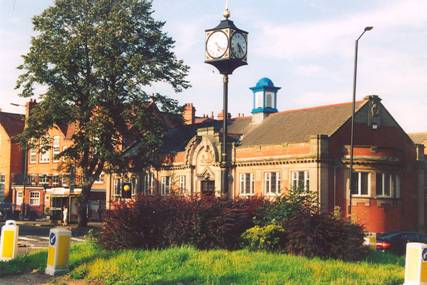
(42) Earlsdon Library and Clock
(42) (43) Methodist Church
(44) (45) Earlsdon School
St. Thomas’ Vicarage was built in 1897, the year of Queen Victoria’s diamond jubilee and the opening of the first direct road access into the city. The church that it served, Old St. Thomas’s in the Butts, was demolished in 1976 to make way for a housing complex, St. Thomas’s Court.
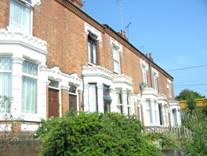 
(49) (50) Albany Road and Albany Public House |
|
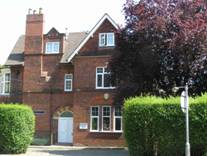 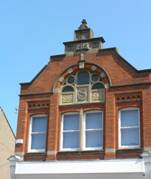 (51) (52) St Thomas's Vicarage and Albany Road (51) (52) St Thomas's Vicarage and Albany Road |
|
Descriptions of Photographs in Zone Four
Photograph (40)
The Methodist Church, the library and Earlsdon School with Earlsdon Avenue North in the background.
Photographs (41 and 42)
The Earlsdon Library was built in 1912/1913. It opened in October 1913 along with the branch libraries in Stoke and Foleshill. The stonework has classical details such as the open topped segmental pediment at the entrance, a minor triangular pediment above the entrance, pilasters at the entrance and corners and a linking cornice with dentils above the windows. The building is crowned with a domed lantern.
Photographs (43 and 44)
The Earlsdon Methodist Church was built in 1922 and opened in 1923. It was designed in the late Gothic style by Crouch Butler and Savage, Architects in Birmingham. The facades have two types of facing bricks combined with Weldon stone details and tracery. The large expanse of roof is covered with sand faced plain clay tiles. The front elevation has octagonal brick towers on the corners. These are topped with open stone turrets and pinnacles. The corner entrance with hardwood doors is a later addition.
Photographs (45 and 46)
The Earlsdon School was opened in 1890 and extended in 1908 to accommodate 547 children and 14 teachers plus the headmaster. This large Victorian institutional building is simply faced with red brick and red plain clay roof tiles. Shallow arched windows ventilate and light the classrooms. The plain brick walls are relieved by decorative treatment to the numerous chimneys, finials, gable verges, shallow arches and bull’s eye openings in the gables. The cast iron railings at the front appear to be original and must have survived the collection of metal during World War II.
Photographs (47 and 48)
This pair of dwellings above shops is very similar to those in photos (43, 44 and 45). The terracotta details and special bricks together with the high quality of workmanship, suggest that both buildings were carried out by the same builder.
Photograph (49)
A terrace of two storey bay windowed properties. The bays have crenellated tops which are formed by dropping the same section copings at regular intervals.
Photograph (50)
The highly decorative brick and stone facades of the Albany Public House opened in 1907.
Photograph (51)
St. Thomas’s Vicarage built in 1897.
Photograph (52)
A shaped gable enclosing a central arch with alternating brick and stone voussoirs. Within the arch are carved stone circular and arched elements. The building has a carved date of 1915.
|



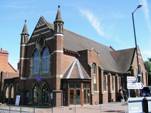
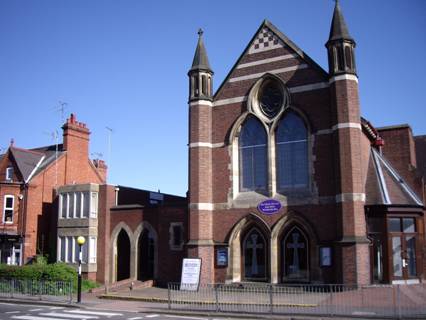
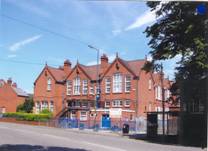
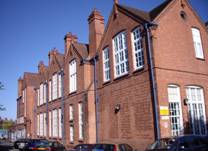
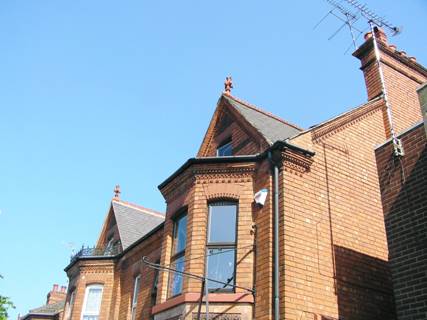
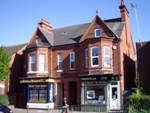



 (51) (52) St Thomas's Vicarage and Albany Road
(51) (52) St Thomas's Vicarage and Albany Road